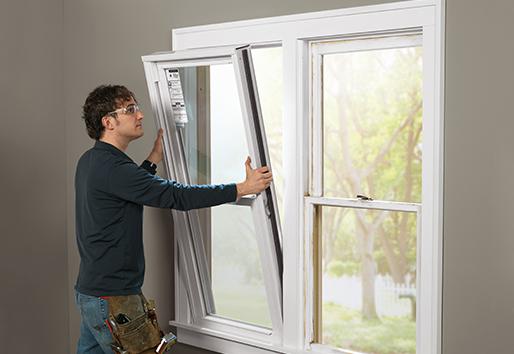For many homeowners, reducing the carbon footprint by creating a more environmentally friendly house is a long-term goal, but one that can be challenging to realize. Fortunately, improving efficiency doesn’t need to mean doing a floor-to-ceiling retrofit — there are many smaller changes that can be made before winter sets in that will guarantee lower energy costs and less waste this winter. Here are five of the most effective:
1. Replace Your Light Bulbs
Good electric light is one of the most essential elements of a modern home, but lighting can also be a major source of energy waste if you are using inefficient bulbs. Consider switching your current incandescent bulbs for compact fluorescent light bulbs — they use about a quarter of the energy conventional bulbs use, and they provide even better light quality.
2. Install A Programmable Thermostat
When winter comes, you will want your home to be warm and cozy. But you will probably also want to keep your energy costs as low as possible. Using programmable thermostats is a great way to ensure that your house is warm when you want it to be warm, without wasting large amounts of energy during the day or at night when it doesn’t matter as much.

3. Replace Your Windows
About 35% percent of total heat loss happens through your windows, which is why purchasing new custom windows for your home and having them installed by professionals who know how to provide the best insulation possible is a great way to cut down on energy loss. Getting new windows installed while the weather is still nice is a great way to ensure your house will stay warm and snug come winter.
4. Upgrade To A Low Flow Showerhead
North Americans have some of the highest water withdrawal rates in the world, and waste massive amounts of water every year. In most homes, showers account for the second largest use of water, the first being toilets. And while installing a low flow toilet may require a bit more of an investment of time and money, if you want to start reducing your water use, replacing your regular showerhead with a low flow version is a great way to save water without affecting your quality of life.
5. Use Your Dishwasher More Regularly
For most readers, this is probably the most surprising item on this list. North Americans have been trained to think that using appliances is always more inefficient than doing things manually, but when it comes to dishes this simply isn’t true — studies show that over the long term, dishwashers actually use less energy than manual washing does, making it the more efficient option.
There are many reasons to make your home more environmentally friendly — for some, it is a matter of ethical living, of using less and making scarce resources go further. For others, it is simply a matter of dollars and cents: an efficient home is a more affordable home, and one that will grow in value faster. For many, it is both. Simple changes like swapping out-of-date appliances for newer ones, upgrading important features like windows, or just embracing smarter ways of doing things can have a long-lasting impact, saving you money and helping in their own small way to save the earth.